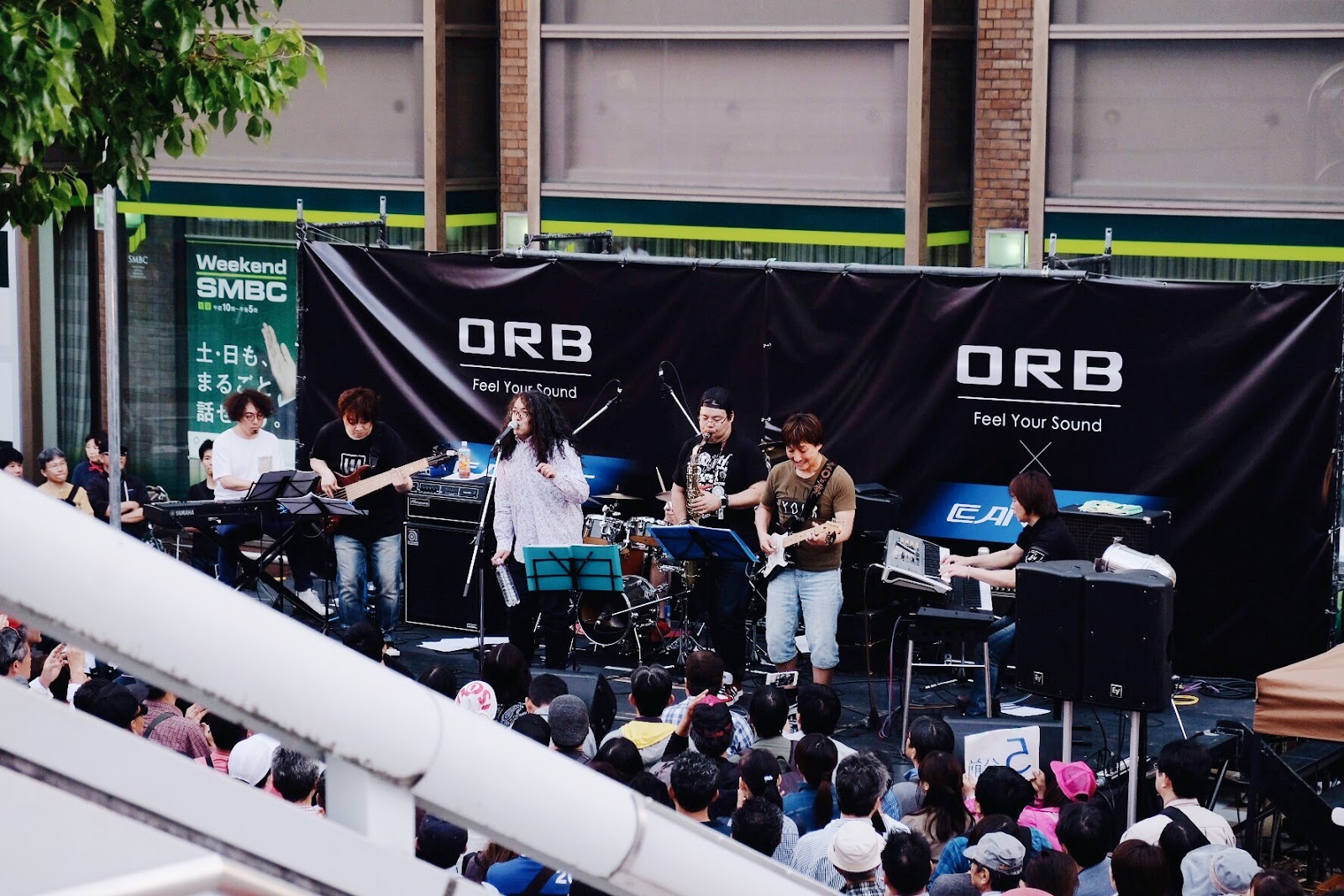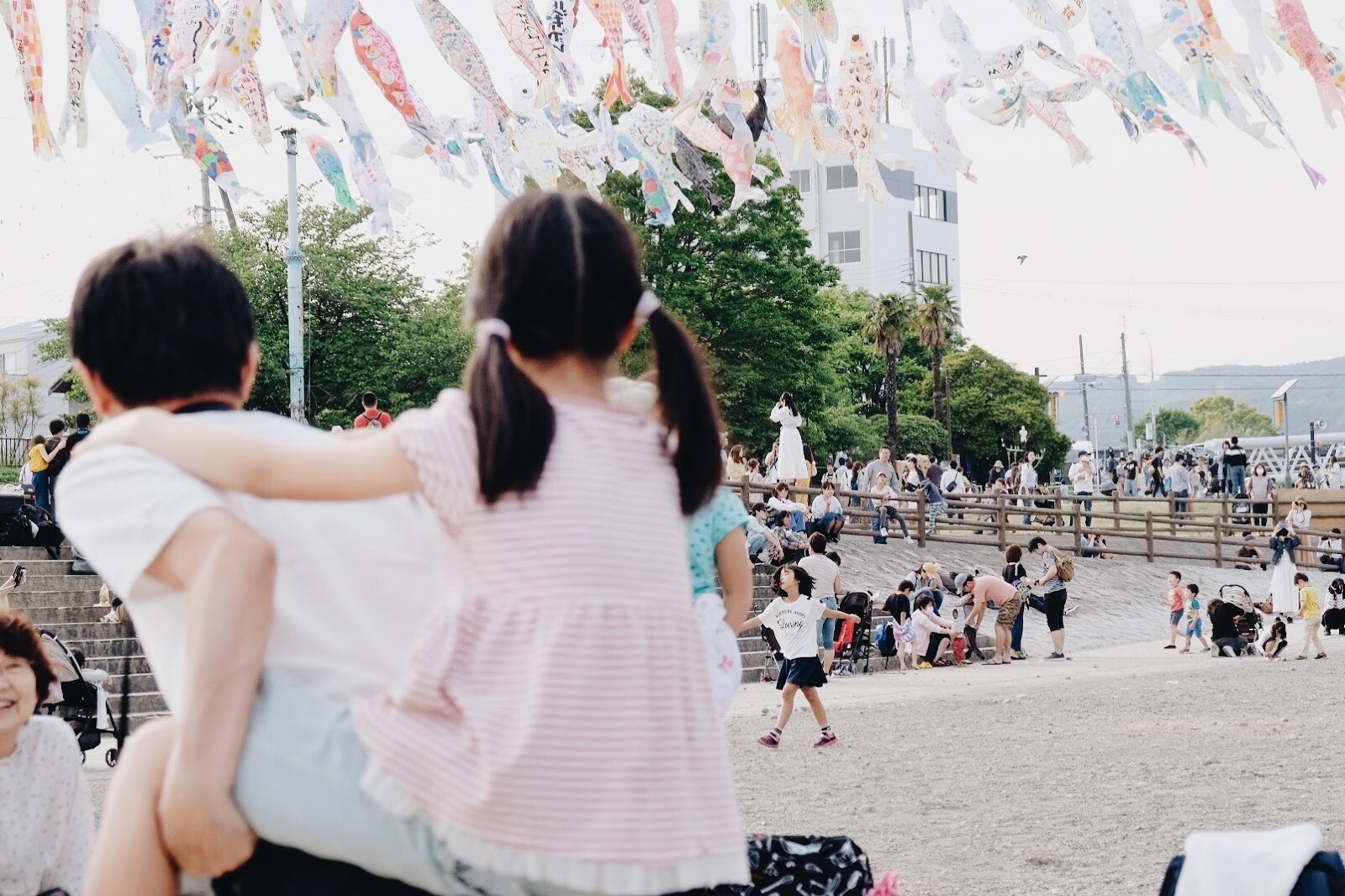The hot and humid weather is coming to the old capital. Summer is (almost) here! Sometimes, the heat of the weather makes people in Japan wish they can just skip summer and go directly to autumn. While this season does not really offer seasonal beauty (i.e. cherry blossom, maple leaves, or snow), summer is probably the most festive season in Japan. Whether you are a passing tourist or a foreign resident that want to feel the summer vibes like locals, here are some ideas of what to do in summer - especially in Kyoto!
1. Look for Hotaru (fireflies) in Shimogamo Shrine: June
Shimogamo Shrine in the northern part of Kyoto offers you a chance to see fireflies in their mini forest (Tadasu no Mori - The Forest of Justice) in the early of June. The event is known as 'Hotarubi no Chakai' (蛍火の茶会), which means 'Tea Gathering in the Glow of Fireflies'. Shimogamo Shrine has about 600 fireflies conserved that will be released in a stream named Mitarashigawa. While the fireflies are released, the guest of the event will be enjoying their tea. Even though the tea ceremony is limited to the reserved seats, other interesting features of the event (which will be mentioned here!) are free.
I arrived when the sun about to set, around 7:00 pm. The shrine was quite packed with people, but still comfortable enough for me to enjoy the surroundings. Entering the gate, there were a lot of Japanese street food stalls lined up, but we went directly to the entrance of Tadasu no Mori to see the main event: the forest of fireflies! There were quite numbers of people lined up to enter the forest, so I had to wait. When finally inside the forest, I was able to walk around but due to the crowd, I must say it was not as magical as some movies may put my expectation. In reality, I walked around the forest looking for any sight of fireflies (they are usually near the body of water) while trying my best not to bump to another guest that pretty much did the same thing as I did. Unfortunately, due to technical reason, I was unable to capture any sight of fireflies - even though I did see some of them and they were beautiful!
It is worth to note that this event also has other features such as purification ceremony (5 pm), musical performance (6 pm) and dance performance (7 pm). My personal suggestion: if you want to visit the Tadasu no Mori, it's better to wait until the crowd gone - near to the closing time. I believe the forest will be less crowded and you may enjoy the forest of fireflies better.
2. Go for a barbecue with friends: anytime!
In summer, Japanese usually have a barbecue party with their family, friends, or relatives. The adults are usually going to the barbecue in the rooftop (known as 'beer garden'), but some others prefer to go to the open space in the public area (park/river bank). However, it is important to note that not all of the public area is available/suitable for barbecue. In the river bank of Kamo River of Kyoto, for example, it is prohibited to do a barbecue party. But need not to worry, the other two river bank of Kyoto's river: Yase River in the north and Katsura River in the West allows you to have some fun barbecue-ing with your closest one!
 |
| My labo bbq day at Katsura Riverbank |
3. See beautiful hydrangea flowers at Mimurotoji Temple: June-July
While other flowers bloom in spring, the hydrangea chooses to bloom in the rainy season of Japan: June to early of July. The flower is known as 'Ajisai' in Japanese, and here in Kyoto, we have Ajisai-ji or Hydrangea Temple! Over 10,000 of hydrangea flowers are spread in the flower park of Mimurotoji Temple, Uji - the city in the southern part of Kyoto. Hydrangea usually a round-shape, but if you're lucky, you might find the heart-shaped one here! The temple also offers light up event on weekend nights.
 |
| Photo from kyotrip.jp |
 |
| Photo from wow-j.com |
Date: June 1 - July 8, 2018
Hours: 8:30 - 16:30
Illumination: 19:00 - 21:00 on Saturday and Sundays (June 9 - June 24, 2018)
Admission Fee: Adult 800 JPY, Child 400 JPY
Website: www.mimurotoji.com
Note: I haven't got a chance to visit the temple itself, I plan to do so next month! Should I have any updates, I'll update here soon after my visit.
4. Do not miss "The Gion Matsuri": July
Gion Matsuri is one of the most famous festivals in Japan. In Kyoto, it is celebrated throughout the month of July, with the Yamaboko Junko parade as the main event on July 17 (the large one) and July 24 (the small one). The festival was date back on year 869 when there was an epidemic disease in the city. A local boy is selected as a messenger, paraded within the city as their effort to pray to the God. It is said that even today, a local boy is still paraded in the Yamaboko of Gion Matsuri, and he should not step his foot on the ground until he has been paraded around the town (July 13-17).
Personally, Gion Matsuri was the first real Japanese festival that I experienced, so I was really excited. Despite the fact that I am not a fan of crowds, but being in a matsuri is a different case. It felt like the world in anime that I watched since I was kid appeared into life: people strolling around wearing yukata, eating street food, watching the parade of Yamaboko, simply be in the moment and enjoy the night. If anyone asks, after being in Gion Matsuri for two times, will I go again to the festival? Definitely a yes! For me, it is the time to celebrate the culture of Japan - and of course - to capture some beautiful moment. My suggestion for anyone who is planning to come: please, prepare yourself for a crowd. If you're not a fan of the crowd or Japanese culture, better watch it from TV :p
 |
| Gion Matsuri always use event waste management for the last three years :) |
5. Watch the fireworks in Biwa Lake or Kameoka: August
Unlike other parts of the world that usually have fireworks in the new year, Japan has their fireworks in the month of August. I would say I am not a fan of fireworks, it is enough for me to go once (maybe in a lifetime). Yet, what is summer in Japan without ever experience fireworks?
The most famous fireworks around Kyoto is the summer fireworks in Biwa Lake, Shiga Prefecture. It takes about an hour train from Kyoto to the Biwa Lake fireworks spot. Despite never experience the Biwa Lake firework, my friend described it as 'crowded, splendid, beautiful, and creative'. The creative part is because you might see not only the round-shape firework but also another shaped-fireworks, such as cats, Pikachu, etc! The firework also reflected in the water of Lake Biwa beautifully.
 |
| Lake Biwa fireworks. Photo from nihon-kankou.or.jp |
Though I didn't go to Biwa Lake, I went to a fireworks festival in Kameoka, a city in the western Kyoto. The firework is on a smaller scale than the one in Biwa Lake, but Kameoka got a charming scenery and the crowd was much easier to handle. They offer you some street food stalls too, which you can buy and enjoy during fireworks-watch. Even though Kameoka doesn't have a lake to reflect the fireworks, they do have the same creativity - there were some shaped-fireworks showed.
 |
| Sunset view of Kameoka |
 |
| Kameoka fireworks |
6. Enjoy summer light up 'Kyo no Tanabata': August
Light illumination in Japan is usually held in winter, fortunately, summer in Kyoto also provide one! Named 'Kyo no Tanabata', this light illumination is an event to celebrate the Tanabata/Stars Festival - the meet of two deities of love, represented by the stars Vega and Altair, that meet once a year, on July 7. Nowadays, people celebrate the Tanabata Festival by writing their wishes on a piece of color paper and tie it up to a bamboo. The light up is held throughout Kyoto, but the most famous one is the one in Horikawa.
I was lucky that on my first year, my dormitory is really close to the place where the festival held (the place is practically a waterway with some walking space that I use for a weekly morning run). I must say, for someone who sees the Horikawa waterway on a daily basis, seeing it at the time of Tanabata Festival is so much different. The waterway was decorated with some pictures highlighted by a spotlight as well as bamboo with some colored-paper tied. The tunnel of the waterway was illuminated - illustrating the meet of two stars beautifully. Worth to go? Definitely yes!
Check another spot of Kyo no Tanabata on their website here.
7. Watch Gozan no Okuribi: August
Those who visit Ginkaku-ji in the east of Kyoto or Kinkaku-ji in the west of Kyoto must have seen a hill with big 'Dai' kanji written. What if I tell you that these two Kanji in the hill will be lit up with fire on the 16th of August?
In August, Japanese people celebrate 'Obon', a Buddhist tradition where it is said that the spirits of people ancestors will come down to the earth. Gozan no Okuribi is the culmination of the Obon festival, where five hills with five different shapes in Kyoto is lit up with bonfires, which is held at the moment that believed to be the time of the spirit of ancestors come back to the spirit world.
The event begin at 8 pm, starts with Daimonji in the east, then followed by other characters from east to west in order. I got a chance to watch the bonfires in Funaokayama Park, the place where you are able to see the four characters lit up for free (they are separated in several parts of Kyoto, so this place is special!). The fifth character, however, was too far to be watched - it is in the back of the mountain in Arashiyama area. When you decide to see all the character however, it will appear small. If you prefer to capture or enjoy the big bonfires, you may choose just one character to watch - for example, you may sit around Kamo River and enjoy the giant "Dai" character of Daimonji.
 |
| The three symbols of Gozan no Okuribi from Funaokayama Park |
Closing Remarks






























